8 Pea Cooking Mistakes That Sabotage Dishes and 5 Easy Fixes That Work

Peas, though small, play a significant role in adding flavor and nutrition to dishes. However, when not treated with care, they can easily ruin a meal. This guide explores common mistakes made while cooking peas and offers foolproof solutions to enhance their taste and texture. From mastering cooking times to elevating their role beyond a mere side dish, these insights ensure your peas are always a delectable feature on your plate. Let’s explore the most common pitfalls and how to avoid them, ensuring your peas delight every palate.
1. Boiling Them Too Long
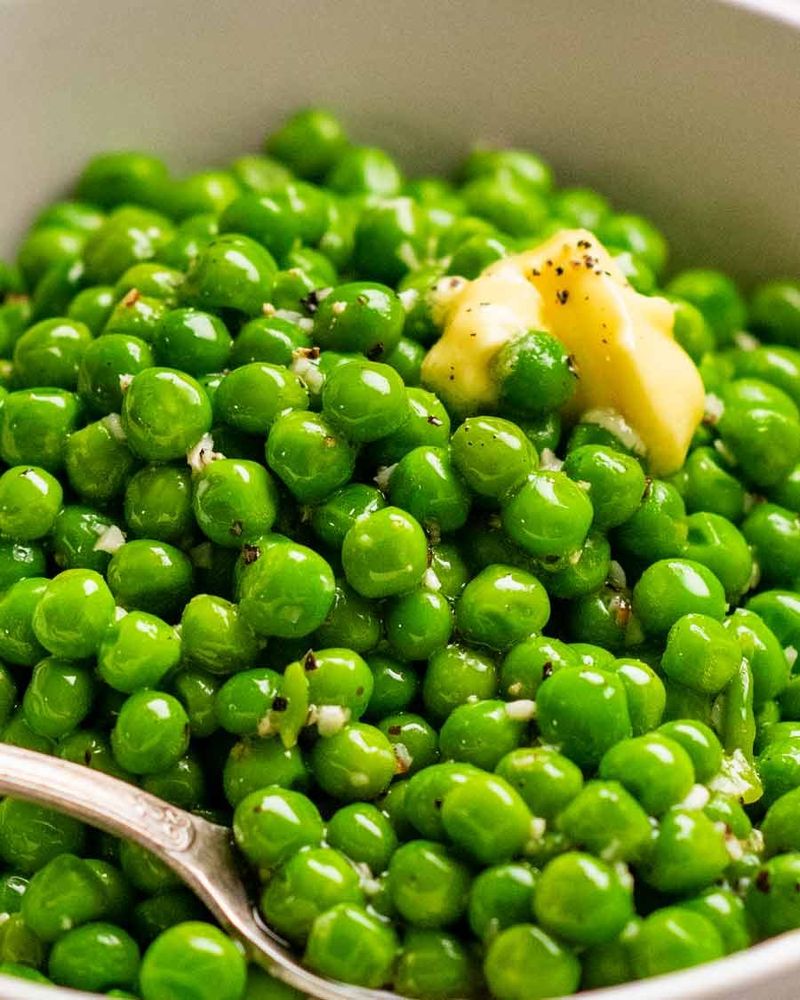
Nothing ruins peas faster than overcooking. When left to boil for too long, their vibrant green fades into a dull gray, and their texture turns to mush. The key to perfect peas lies in quick cooking methods, like steaming or a brief simmer. This preserves their natural sweetness and firm texture. Think minutes, not hours. A fun fact: The natural sugars in peas convert to starch quickly when overcooked, robbing them of their inherent sweetness.
2. Skipping the Salted Water
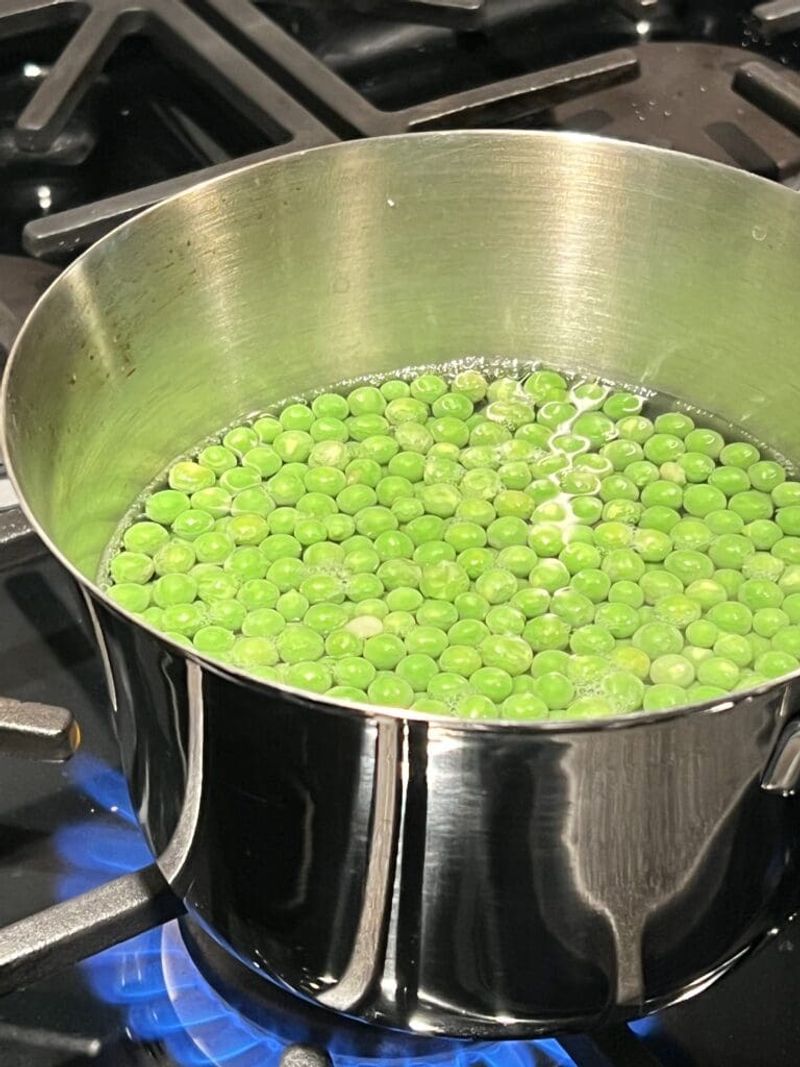
A pinch of salt can make a world of difference. Just as with pasta, peas benefit greatly from being cooked in salted water. Without this crucial step, they risk tasting bland and lifeless. The salt enhances their natural flavor, making them a delightful addition to any dish. It’s an easy trick that elevates the taste profile, turning simple peas into a savory delight. Remember, seasoning is an art, and it starts right at the cooking stage.
3. Tossing Them Straight Into the Pan Frozen

Dumping frozen peas directly into a hot dish is a recipe for disaster. Some peas might turn mushy, while others remain icy cold. The trick is to thaw them first, either by letting them sit at room temperature or giving them a quick steam. This ensures even texture and flavor throughout. Did you know? Thawing peas not only improves their texture but also makes them more receptive to flavors, allowing them to absorb seasonings better.
4. Forgetting the Shock
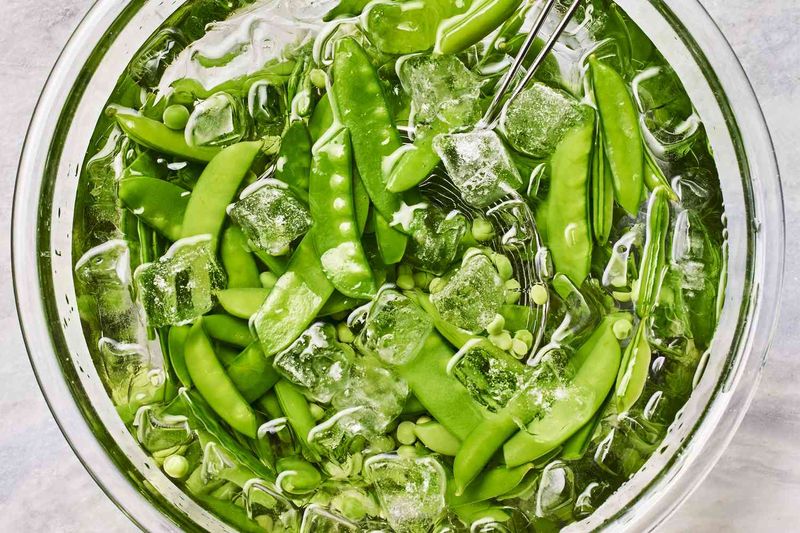
Blanching peas without shocking them in ice water is a missed opportunity to lock in color and texture. The shock halts cooking immediately, preserving the peas’ bright green hue and crispness. Without it, they continue cooking, leading to dull and soggy results. This technique is especially vital for maintaining aesthetic appeal in salads and garnishes. The contrast between the hot blanch and cold shock is what keeps peas looking fresh and inviting.
5. Treating All Peas the Same

Not all peas are created equal. Snow peas, sugar snap peas, and English peas each have distinct cooking requirements. For instance, stir-frying snow peas quickly preserves their crunch, while English peas need gentle simmering to soften. Understanding these differences ensures each type shines in its own right. This knowledge transforms peas from a simple ingredient to a dish’s star. Remember, variety is the spice of life, and peas are no exception in the culinary world.
6. Using Old, Mealy Peas
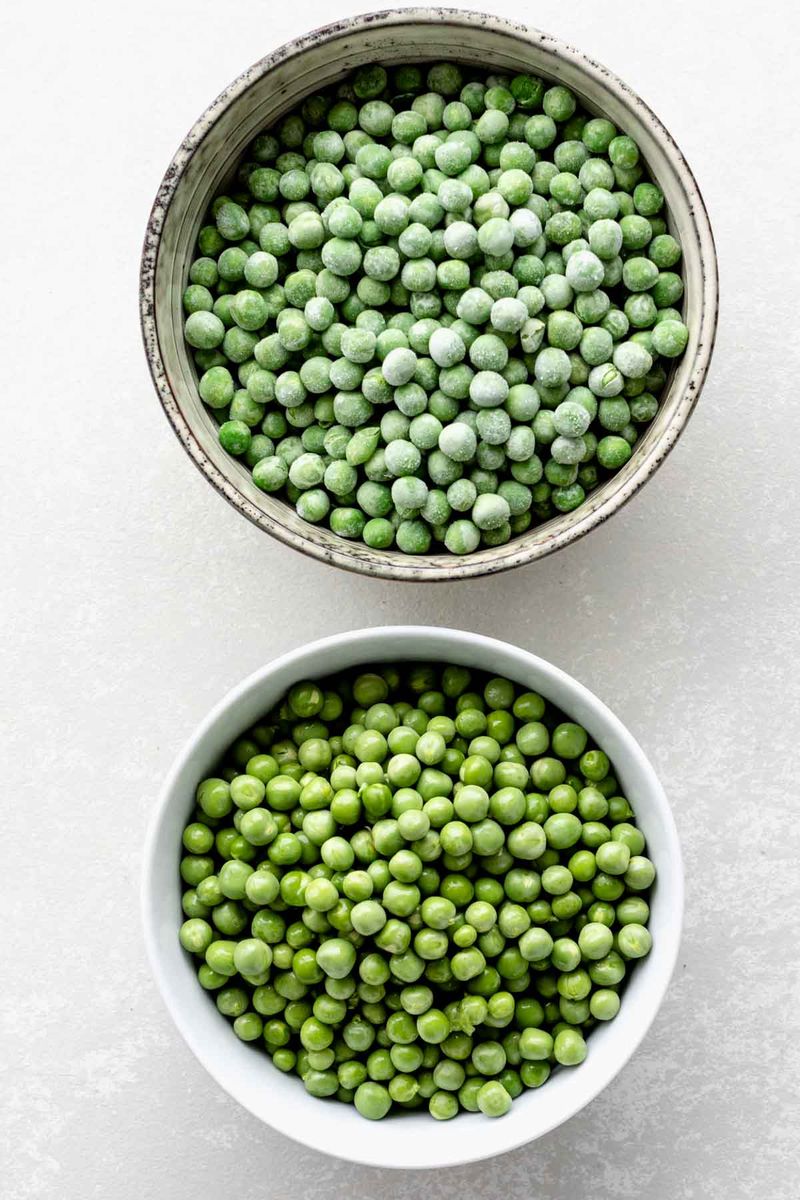
Freshness is key when it comes to peas. Old, mealy peas lack flavor and turn starchy quickly, ruining the texture of a dish. Always opt for peas that are plump and vibrant. If they appear wrinkly or taste chalky, it’s best to skip them. Did you know? Frozen peas often retain their quality longer than fresh ones due to quick freezing techniques that lock in flavor and nutrients. Choosing the right peas ensures every bite is delightful.
7. Letting Them Sit in Liquid

Allowing peas to sit in liquid, like broth or sauce, can turn them mushy and unappetizing. To prevent this, add peas towards the end of cooking. This way, they retain their firmness and add a burst of freshness to the dish. Fun fact: Peas are excellent at absorbing flavors, so adding them last ensures they soak up only the best notes without becoming soggy. It’s a simple yet effective tip for maintaining pea perfection.
8. Using Peas as a Filler, Not a Feature
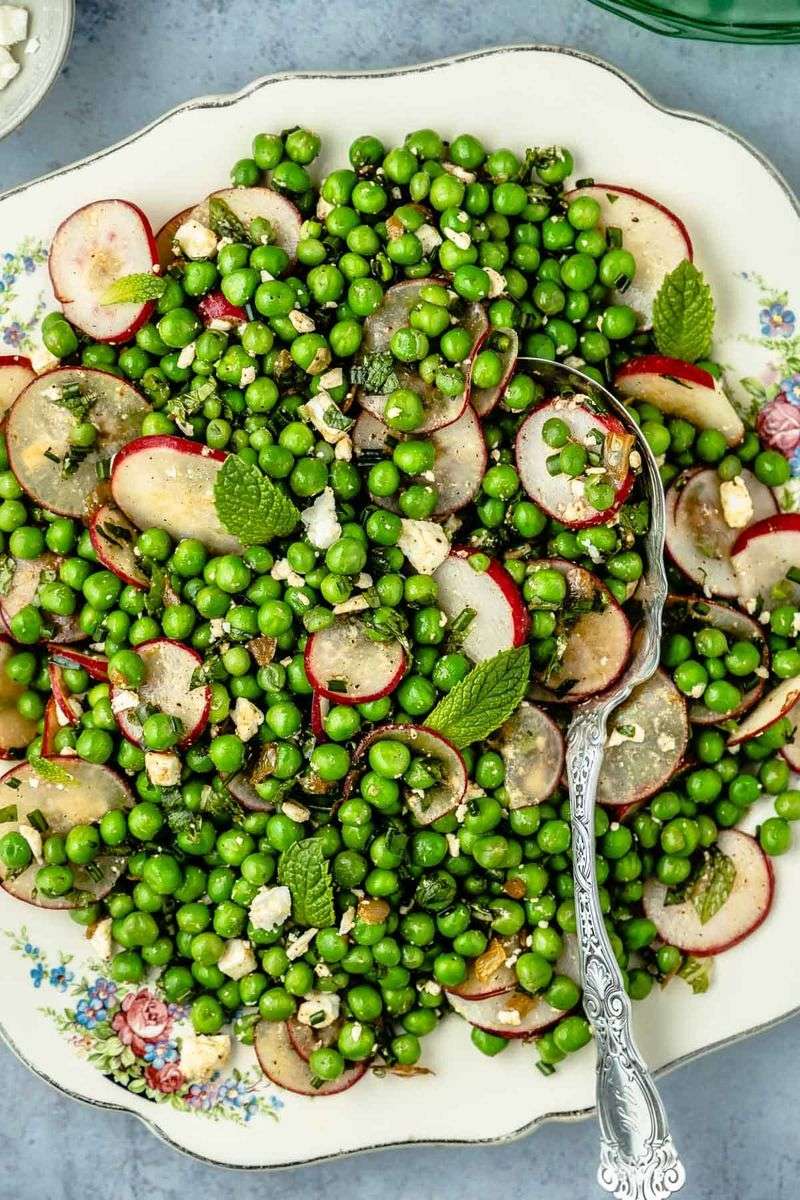
Peas deserve more than to be mere fillers in recipes. When given attention, they can be a dish’s hero. Proper seasoning and thoughtful incorporation elevate their role from background to forefront. Whether in soups, salads, or pasta, peas can shine with their sweet flavor and vibrant color. Consider this: Peas have been cultivated since ancient times for their versatility and nutritional value. Let them take center stage, and they’ll transform your meal.
9. Add a Little Butter and Mint
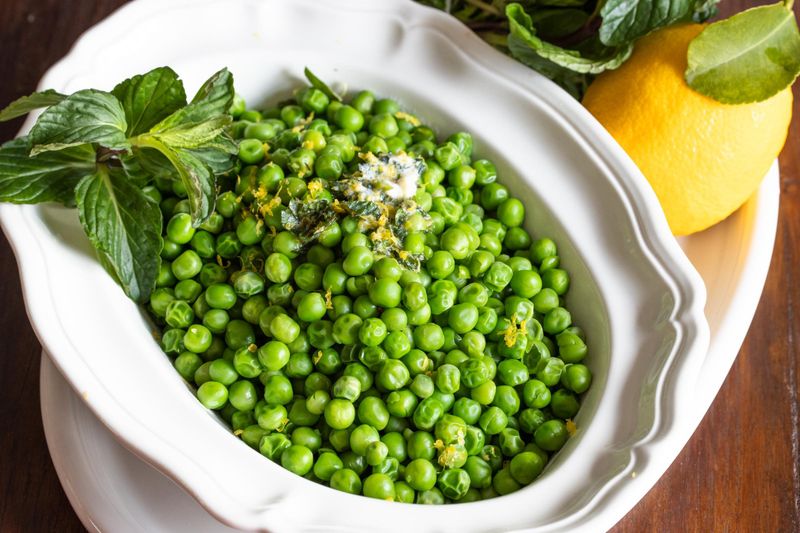
A simple touch of butter and mint can transform peas from ordinary to extraordinary. The butter adds richness, while mint brings a refreshing contrast, enhancing the peas’ natural sweetness. This classic combination is perfect for a quick side dish that’s both elegant and flavorful. Did you know? Mint has been paired with peas for centuries, a testament to how these flavors complement each other beautifully. Try this duo to elevate your pea experience.
10. Toss Them Into a Stir-Fry at the End
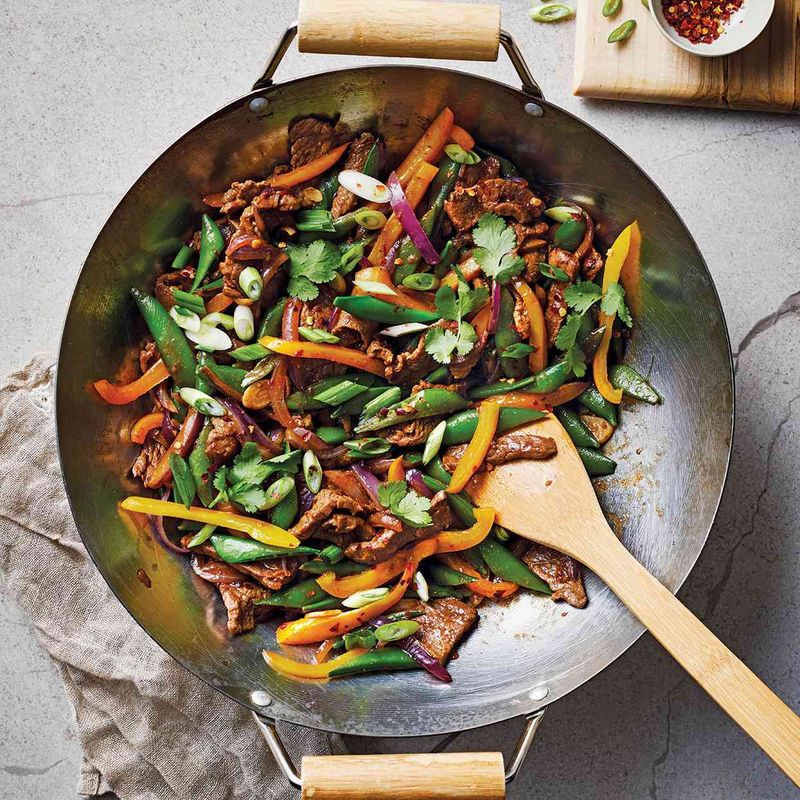
For stir-fries, timing is everything. Adding peas at the end ensures they retain their crispness and bright color, offering a delightful contrast to the dish’s other elements. Sugar snap and snow peas are particularly well-suited for this method. Fun fact: By adding peas last, you not only preserve their texture but also their nutritional benefits, making your stir-fry both healthy and delicious. This approach keeps your dish lively and visually appealing.
11. Blend into a Pea Purée with Lemon and Garlic

Pea purée is a sophisticated way to enjoy this humble vegetable. Blending peas with lemon juice, garlic, and olive oil creates a sweet-savory spread that pairs perfectly with meats or can be enjoyed on its own. This dish highlights the versatility of peas, transforming them into a gourmet delight. Fun fact: Pea purée has roots in French cuisine, where it’s often served with lamb. The freshness of lemon enhances the peas, while garlic adds depth.
12. Use Peas in Pasta (But Smartly)
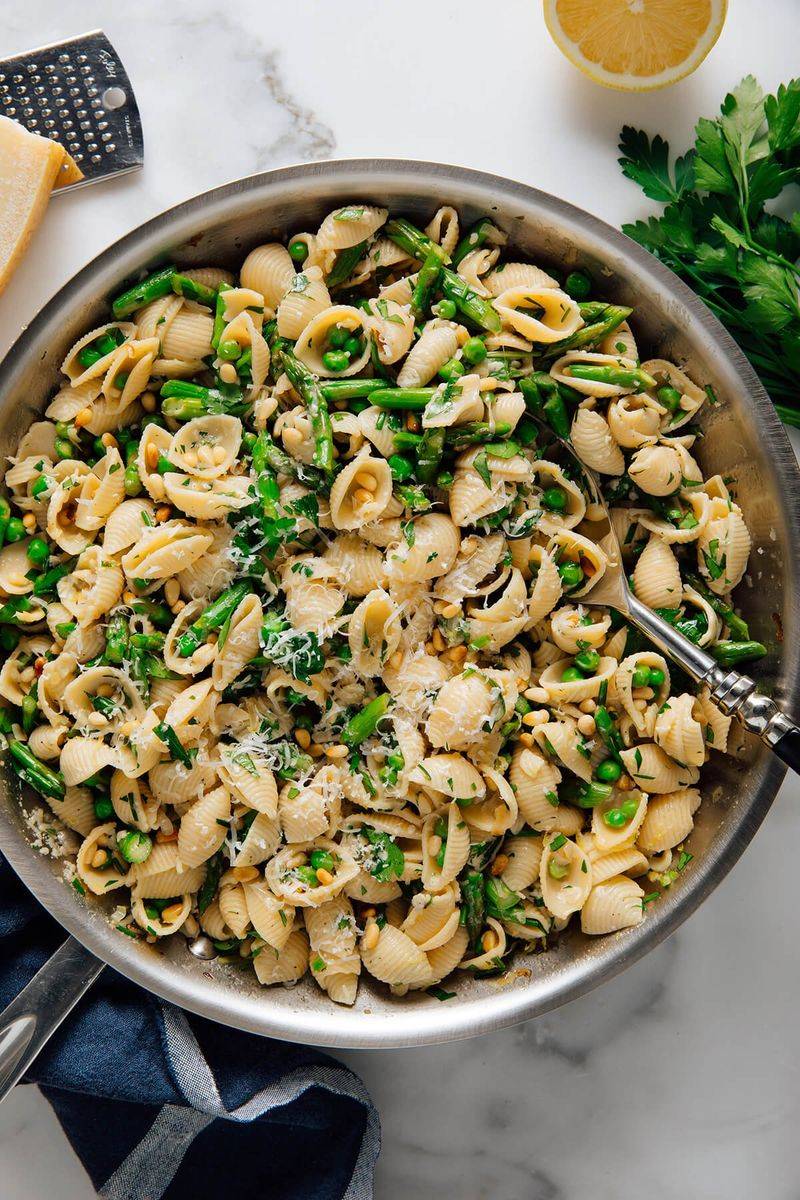
Incorporating peas into pasta is an art. Briefly boiling them in the pasta water, then draining and mixing helps maintain their texture. Adding lemon zest, parmesan, and black pepper transforms the dish into a fresh and vibrant meal. Did you know? This method allows peas to absorb the pasta’s flavors while retaining their own unique taste. It’s a clever way to add color and nutrition to your pasta without making it soggy.
13. Roast Peas for a Crispy Snack
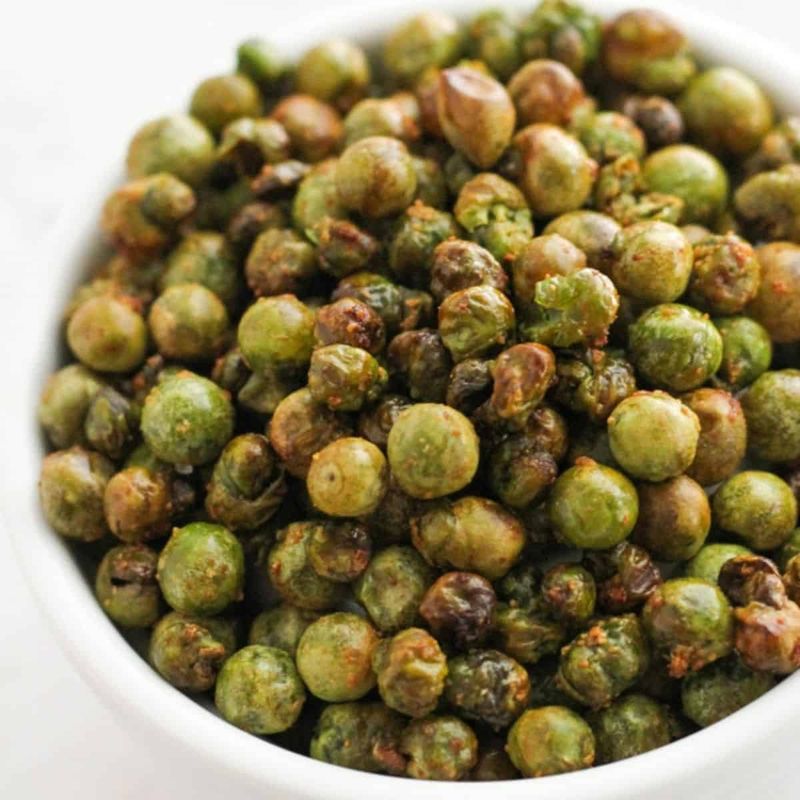
Roasting peas is a creative way to enjoy them as a snack. Tossing cooked peas with oil and seasonings like smoked paprika or garlic powder, then roasting, results in a crunchy alternative to chips. This method highlights peas’ versatility beyond traditional cooking. Did you know? Roasting peas brings out a nutty flavor, making them a delightful treat. It’s a fun way to enjoy peas’ natural goodness while satisfying your snack cravings.
